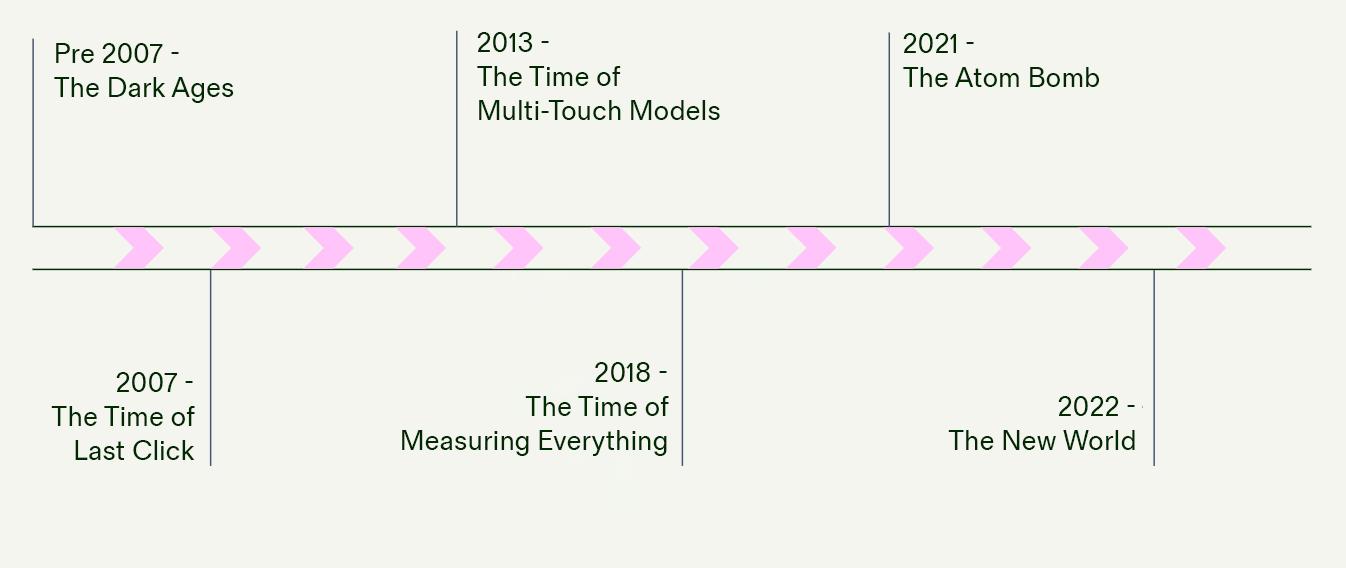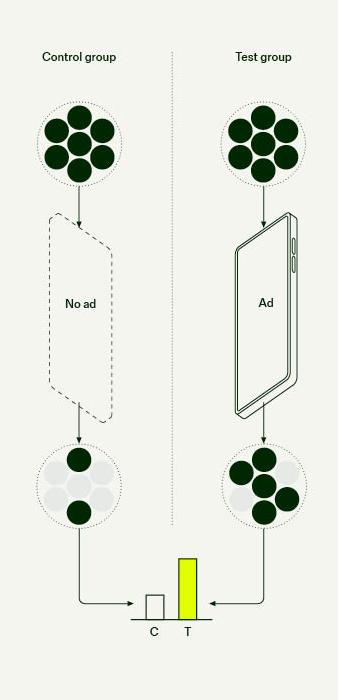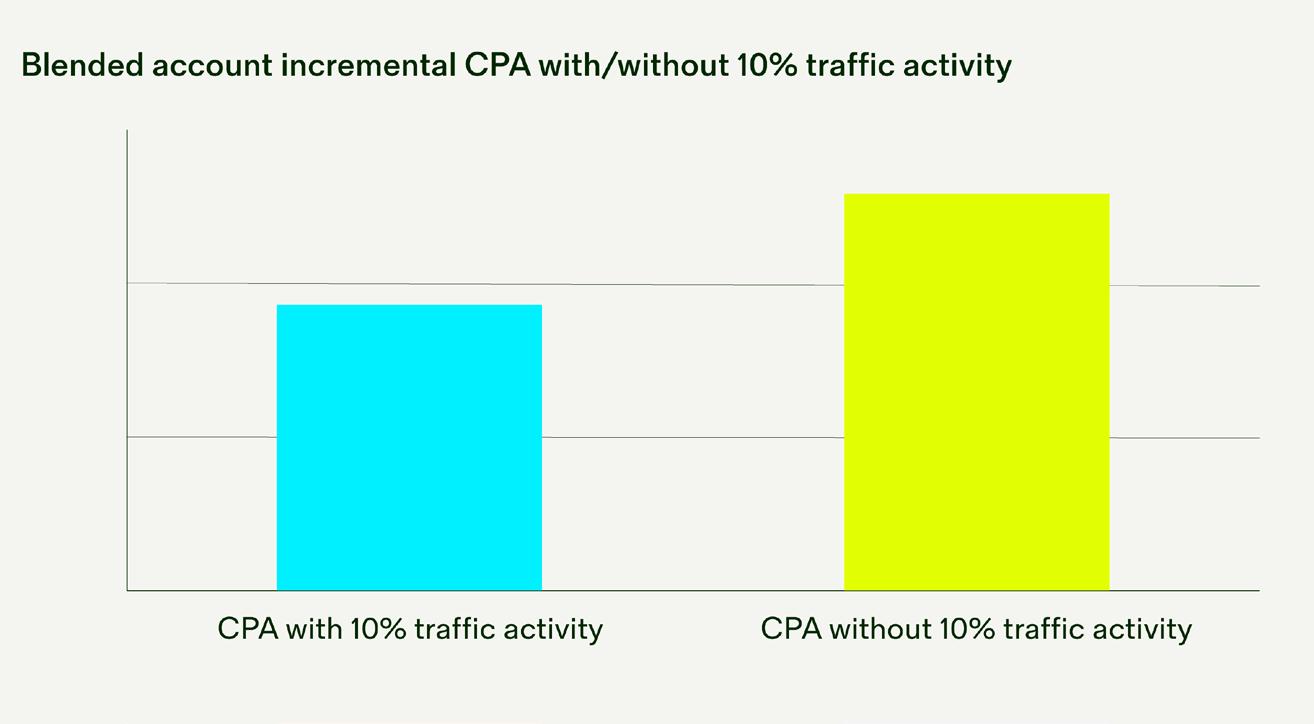Don’t fall behind on brand
Getting results beyond performance


Ecommerce brands have deployed performanceheavy marketing strategies to grow their companies since the start of the internet. However, recent challenges have made success with this strategy more difficult. In this report, we will explore how digital channels deliver significant results for brand – and when leveraged alongside performance, will reduce customer acquisition costs and improve return on ad spend in the short term, too.
2 nestcommerce.co
Don’t fall behind on brand: Getting results beyond performance
Why brand & why now?
How you should approach brand
Measuring the impact of brand activity
Why brand should be part of your 2023 strategy
Find a working path to growth
3 Don’t fall behind on brand: Getting results beyond performance nestcommerce.co
What's inside
4 7 9 11 13
Why brand & why now?
The history of internet marketing = the history of performance marketing
Direct response wasn’t born in the internet age but it is where it found its natural home. Performance marketing allowed for highly targeted marketing campaigns – and at its onset, it was much cheaper than traditional methods too.
Your advertising costs are double what they were in 2020. It’s hard to attribute sales to specific channels. Platforms that used to drive performance, aren’t working for you anymore.
How did you get here? Recent trends might be negatively impacting performance but there is a deeper-rooted cause that goes way back – right back to the start of internet marketing.
In this environment, brands could assume significant accuracy with their measurement. So, why would digital start-ups and disruptive brands invest money in long-term brand marketing campaigns, when they could achieve their objectives without them?
All of this with huge (and easily attributed) ROI, driving rapid growth.
For internet-first brands, brand marketing fell out of fashion. Then, in 2021, everything changed.
4 Don’t fall behind on brand: Getting results beyond performance nestcommerce.co
Marketing is going back to the future
The impact of signal loss caused by a rise in consumer privacy movements – most famously iOS 14 – has been tremendous. Performance marketing changed forever. Specifically, it created challenges with measurement and challenges with performance.
When one door closes, another opens. The impact on in-platform measurement, as attribution windows narrowed and the quantity of tracked conversions dropped off, forced performance marketers to look for other ways of evaluating ads.
This led many to rethink the value of ads in general, beyond conversion windows. In an environment where quick results are few and far between, ROI has to be measured differently. This led many to rediscover the impact of brand marketing.
So, has brand become more effective? Not necessarily. It turns out it was effective all along.

Now brand is back in fashion. Indeed, 70% of fashion marketers have increased their investment in upper-funnel ad spend according to Deloitte’s ‘Brand marketing effectiveness study ’ .
Meanwhile, recent research from Meta has found that digital ads have two effects: ‘Activation effect’ (short-term) and ‘Brand effect’ (long-term). They attribute 40% of the value of digital advertising to ‘Activation’ and 60% to ‘Brand’. This means that performance-only campaigns miss out on more than half of the potential impact of ads.
5 Don’t fall behind on brand: Getting results beyond performance nestcommerce.co
TV vs digital is lose-lose
In a way, this shift towards brand marketing could be seen as a return to older methods of marketing.
So, should online brands shift performance budgets to TV? Short answer: no. But don’t take our word for it.
In ‘No Silver Bullet: Cross-Media Complementarity’, a research paper from Oxford University’s Saïd Business School, researchers looked at 105 campaigns from 557 brands delivering internationally.
They found that the average campaign could be 2.6 times more effective with a different channel allocation mix, with TVonly campaigns underperforming against a mixture of traditional media and paid social.
In comparison, digital platforms like Meta, TikTok and YouTube are natural fits for digital brands, especially those starting off on brand.
Firstly, it is possible to scale up from nothing to results quickly. You have a good idea of where your results are going and the ads can be more targeted.
Meanwhile, your campaigns will have a direct impact on your performance campaigns and improve retargeting. Measurement is also much easier.
Should brands spending big on TV shift all their spend to Meta? We don’t suggest this either. But it should clearly be part of your channel mix.
What about online brands looking at TV? There are three main blockers here: TV is expensive, it requires a significant commitment to testing, and you need to invest a significant amount in ad production up front.
Digital also brings less risk. If your brand objective TikTok ads aren’t performing, you can simply switch them off.
6
fall behind on brand: Getting
beyond performance nestcommerce.co
Don’t
results
How you should approach brand
Start with a clear objective
There are a variety of brand objectives available and these should all be tested and implemented where relevant.
Examples include long-form video-led campaigns for product launches, brand awareness campaigns or message association pushes.
In our brand campaigns at Nest we have two objectives we use:
So, you’re ready to take the leap into brand, or at least to test it. The question is –where do you start?
The end goal of brand marketing is the same as performance marketing: increasing sales and revenue and improving ROAS and CPA. In other words, to focus on efficient performance or drive volume.
One key difference between performance marketing and brand marketing is the time window between advert and purchase. However, broadly speaking, you will still need a specific goal for your ad tied to revenue.
1. Compare incremental new customer acquisition against the additional reach of brand campaigns
2. Run a lift test to see if investment lifts revenue enough to warrant extra budget Campaign success should also be measured against a ‘soft objective’ based on the ad format, usually engagement, views or clicks, to ensure the creative is delivering.
7 nestcommerce.co Don’t fall behind on brand: Getting results beyond performance
A brand new approach Beyond mental availability
Often brand marketing is associated with campaigns that have high reach and drive qualitative impact (such as ad recall, brand awareness and brand affinity), but that are ineffective in driving performance.
There is some truth in this – reach alone will not drive performance.
That said, running brand campaigns in conjunction with performance-led campaigns has shown significant improvements to performance compared to pure performance.
The key is to align objectives and platform to drive incremental results.
Traditional brand campaigns focus on mental availability. This can be effective at scale and drives results but is difficult to measure with precision.
However, coordinating brand campaigns with performance (or ‘performance brand’) means you can attribute with accuracy what ROI your investment is driving.
With lower in-platform costs, brand campaigns can be leveraged for affordable reach and traffic to fuel efficient retargeting, driving CPM way down and therefore CPA.
What does this look like on...
Meta
Deploying awareness campaigns to feed retargeting. First leveraging formats such as video and Reels to teach the pixel, and then conversion formats for retargeting.
Google
Performance brand strategy works similarly on Google but with very different creative. One example would be leveraging Discovery Ads, which can appear on additional Google services, as well as investing in pure YouTube activity.
TikTok
TikTok takes the power of brand even further with seriously low CPMs and a full-screen sound-on experience, meaning you get full mental availability at lower cost.
8 Don’t fall behind on brand: Getting results beyond performance nestcommerce.co
Measuring the impact of brand activity
Attribution is a serious challenge in 2022. Especially through last click attribution, which undervalues Facebook by 47% on average according to research from Meta.
Indeed, third-party attribution platforms such as Fospha and Measured.com are certain that Meta is under-attributed, with Fospha’s ‘State of eCommerce Advertising Report Q1 2022’ suggesting it underreported by 1.3 times for direct response campaigns and a staggering 23 times for brand campaigns.
When it comes to brand marketing, it has always been harder to measure than performance. That said, privacy measures like iOS 14 have battered attribution for performance, increasing the viability of brand campaigns.
Despite measurement being harder than ever, there are various statistical methods (such as MMM or Econometrics) and software solutions (like Fospha) that will allow you to measure brand.
However, there are two methods that provide directional insights to your spend that we recommend as a starting point (and they are completely free):
9 Don’t fall behind on brand: Getting results beyond performance nestcommerce.co
Brand lift tests Conversion lift tests
A brand lift test works by polling an audience that has seen your brand ads against one that hasn’t and comparing their responses to questions set by you. The questions themselves can vary from if they have seen your ads to their perception of your brand.
There is a minimum reach you need before you are able to run one on Meta but these can be very effective in measuring the impact of your brand ads and we would suggest running these in conjunction with other methods when running your ads if you are able to.

Running a conversion lift test is the minimum standard for meaningfully assessing the impact of your brand marketing spend. Similar to a brand lift test, you compare an audience that has seen your ads against one that hasn’t to measure the results.
However, instead of polling both audiences, you instead compare the number of conversions from both groups. These are hugely successful in measuring how much you can afford to invest in brand ads.
This is by far the best option if you are testing with brand marketing and want to prove short-term impact on performance and immediately measurable ROI.
10 Don’t fall behind on brand: Getting results beyond performance nestcommerce.co
Why brand should be part of your 2023 strategy
Even if you are now on board for brand marketing, you likely have internal stakeholders to win over. That’s why we want to help you build a business case for brand.
Prepare for the recession question
“Why should our company invest in brand marketing when we are facing immediate short-term cost pressures?“ You should have an answer ready for this question.
This comes from a misconception that brand is all about long-term impact. Investment in brand alongside performance actually improves performance in the short-term.
In other words, you can get the long-term benefits while also improving revenue within the test, making the business case following these early results much clearer.
There is also the cost factor. Brand is much cheaper than performance. According to aggregated Nest data, CPM is 57% lower and CPC is 31% lower compared to direct response. Even if you leverage performance channels to discover new customers, you will get significantly more ROI by investing in brand too.
11 nestcommerce.co
fall behind on brand: Getting results beyond performance
Don’t
Don’t get lost in the competition Bring your brand team on board
Performance campaigns look for people who are likely or have a higher intent for purchase. With fewer customers in market during a recession, you will need to stand out more from the competition. Despite this, marketing budgets for many companies are getting cut across the board, making it cheaper to fight for the share of voice that you will need to find the remaining customers.
This is the other significant benefit of investing in brand is that it will greatly increase your reach. Leveraging a wider (and cheaper) net will help you remain competitive.
Earlier we explored the differences between traditional brand campaigns focused on mental availability and performance brand campaigns which leverage brand to fuel performance.
If you sit within a performance team that is siloed from brand, now is the time to break down the walls between your teams and collaborate. Don’t let performance and brand pull in different directions, as this could be costing you. According to Lucidchart’s ‘State of brand consistency’ report, consistent brand image increases revenue by an average of 23%.
After all, the end goal is the same for brand and performance: conversions, customer acquisition and revenue.
The recession will end
During economic downturns, consumers will have to make more difficult decisions about where their money goes. It’s important to understand your ICP before carrying out your campaign and what their pressures are.
In the Harvard Business Review's article ‘How to Market in a Downturn’, researchers explored how behaviour changes during recessions. Whoever you are selling to, it is still important to allocate for the long-term. Consumers will still buy during a recession – and a solid marketing strategy is more likely to ensure your brand’s survival than slash-and-burn cuts.
Budgets are being decreased at the same time as platform performance has faltered, which means every penny has to matter. Investing in brand to decrease incremental CPA costs makes budgets spread further if done correctly. In other words, it is more effective and more efficient.
12 Don’t fall behind on brand: Getting results beyond performance nestcommerce.co
Find a working path to growth
There are two main areas where you will benefit from your brand investment: impact on CAC and impact on reach.
Impact on CAC
Cheaper traffic achieved through investment in brand will feed into your retargeting campaigns resulting in cheaper CPM. The wider and less competitive audience size, as well as additional learnings, allow the platform's algorithm to learn faster. This is true across Meta, Google or TikTok.
According to aggregated Nest data, investment in as little as 10% of traffic activity drives 28% lower incremental inplatform CPA and 19% higher incremental ROAS when compared against unexposed audiences.
Meanwhile, according to Fospha's ‘State of eCommerce Q4 2022’, Meta delivers strong results at the top of funnel – and investing in awareness delivers a 28% ROAS uplift.

13 Don’t fall behind on brand: Getting results beyond performance nestcommerce.co
Impact on reach Full-funnel view
Most of your future customers don’t know who you are and aren’t willing to buy from you right now. This may sound obvious but if you’re investing 100% of your budget in performance then your brand isn’t really planning for the future.
Traditional brand marketers at established companies know this. Focusing on conversion alone will only get you so far.
This is where the long-term value of brand is. Increasing the chance that future customers down the line will buy from you, eventually, leading to more conversions.
What is the alternative? Investing in bottom-of-the-funnel channels may ensure high growth in the short term. Eventually, you will see your market share will shrink.
This is because you failed to advertise to customers who don’t know your brand. According to LinkedIn’s ‘Brand and Demand’, companies who invest in targeting new and existing customers together were 1.6 times more likely to drive better business results.
Every penny of marketing budgets matters right now. That's exactly what makes the case for performance brand so strong.
This will not only improve performance now, but done correctly you will also get similar benefits to traditional brand over the medium-term and long-term.
Looking forward
There is room to be positive too. Despite challenges in the wider economy, ecommerce is still expected to grow significantly, with Morgan Stanley’s ‘Stronger for Longer in Global E-Commerce’ report predicting sales will almost double by 2026.
In other words, you are not part of a shrinking sector. Adoption of online shopping channels exploded during the pandemic and these trends aren’t stopping. According to McKinsey’s ‘Digital resilience’, digital adoption has not yet reached 50% of its potential.
The opportunities for growth are out there – and brands who approach these next few years with the right strategy in place will be in a stronger position than ever when the wider economy recovers.
14 Don’t fall behind on brand: Getting results beyond performance nestcommerce.co
15 nestcommerce.co Don’t fall behind on brand: Getting results beyond performance Let’s talk Want to discuss performance brand strategy with one of our ecommerce marketing experts? Our team helps brands like yours every day. Get in touch here.
© 2022 Nest Commerce. All rights reserved.





